Art history 1010 midterm review
1/19
There's no tags or description
Looks like no tags are added yet.
Name | Mastery | Learn | Test | Matching | Spaced |
|---|
No study sessions yet.
20 Terms
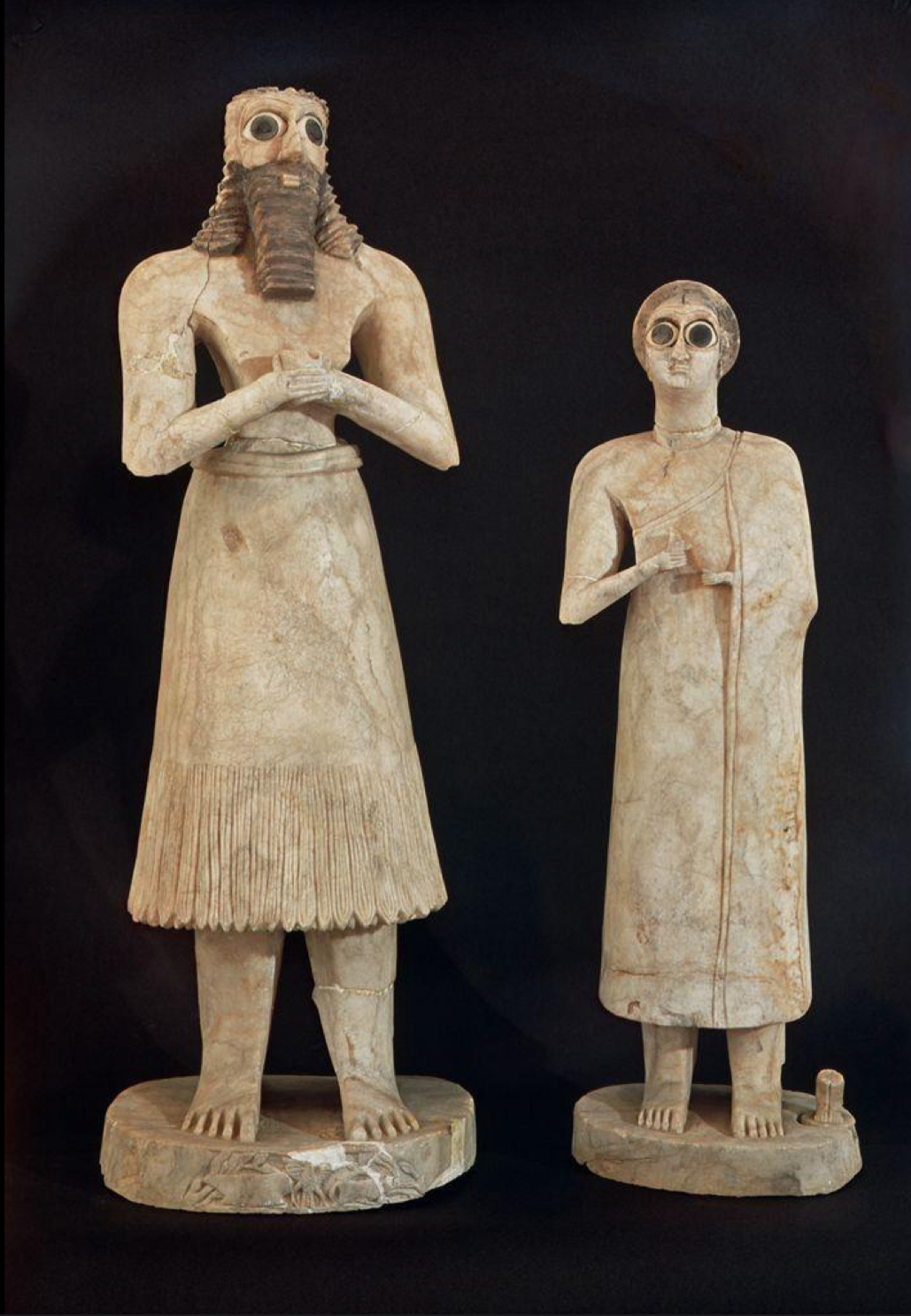
Statuettes of Worshippers
What is it? Small statues of people, often shown with hands raised in prayer.
What does it look like? Standing figures with large eyes, simple clothing, and beards.
Materials: Made from limestone
How was it made? Carved by hand with detail in the eyes.
Who made it? Sumerian artists.
Where and when? Mesopotamia (modern-day Iraq), around 2900 BCE.
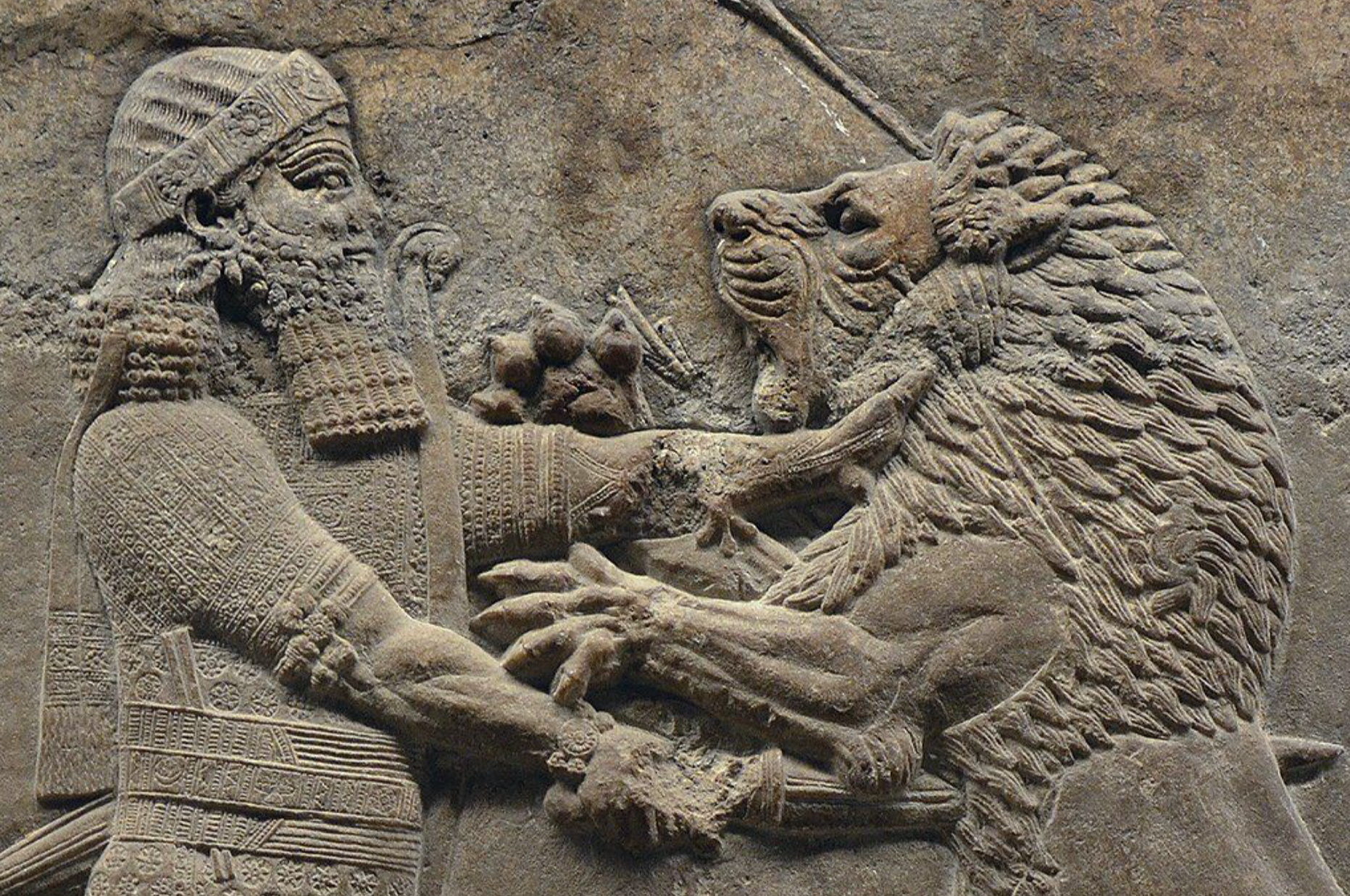
Assyrian Lion Hunt
What is it? A series of relief sculptures depicting a royal lion hunt.
What does it look like? Action-packed scenes of the king hunting lions, showing power and bravery.
Materials: Stone relief carvings.
How was it made? Carved into stone panels.
Who made it? Assyrian artists.
Where and when? Nineveh, Assyria (modern-day Iraq), circa 645 BCE.
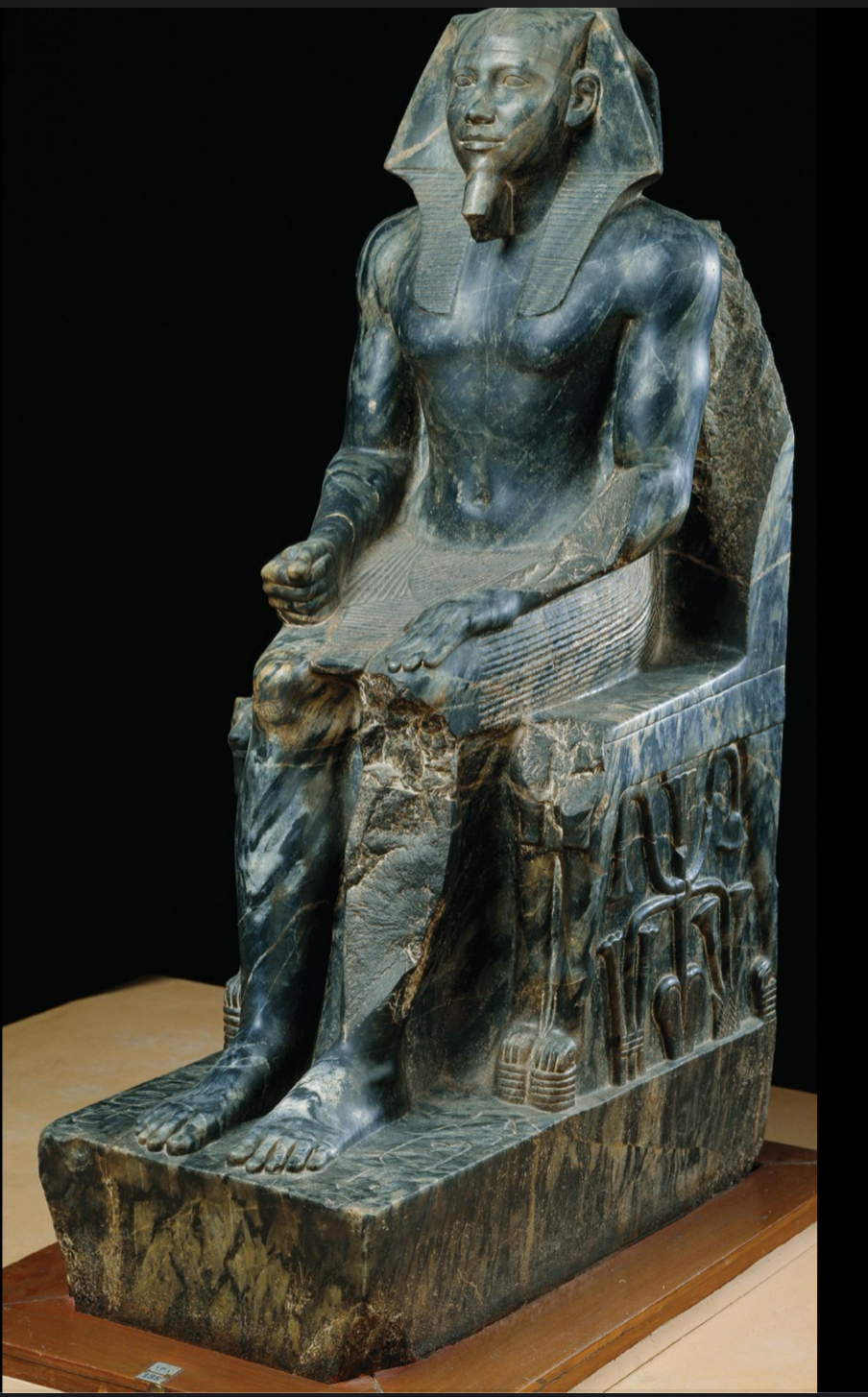
Seated Statue of Khafre
What is it? A statue of the Egyptian Pharaoh Khafre.
What does it look like? The king sits on a throne, wearing a headdress, with a serene expression.
Materials: Made from diorite, a hard, dark stone.
How was it made? Carved with great skill to show idealized features.
Who made it? Egyptian sculptors.
Where and when? Egypt, circa 2500 BCE (Old Kingdom).
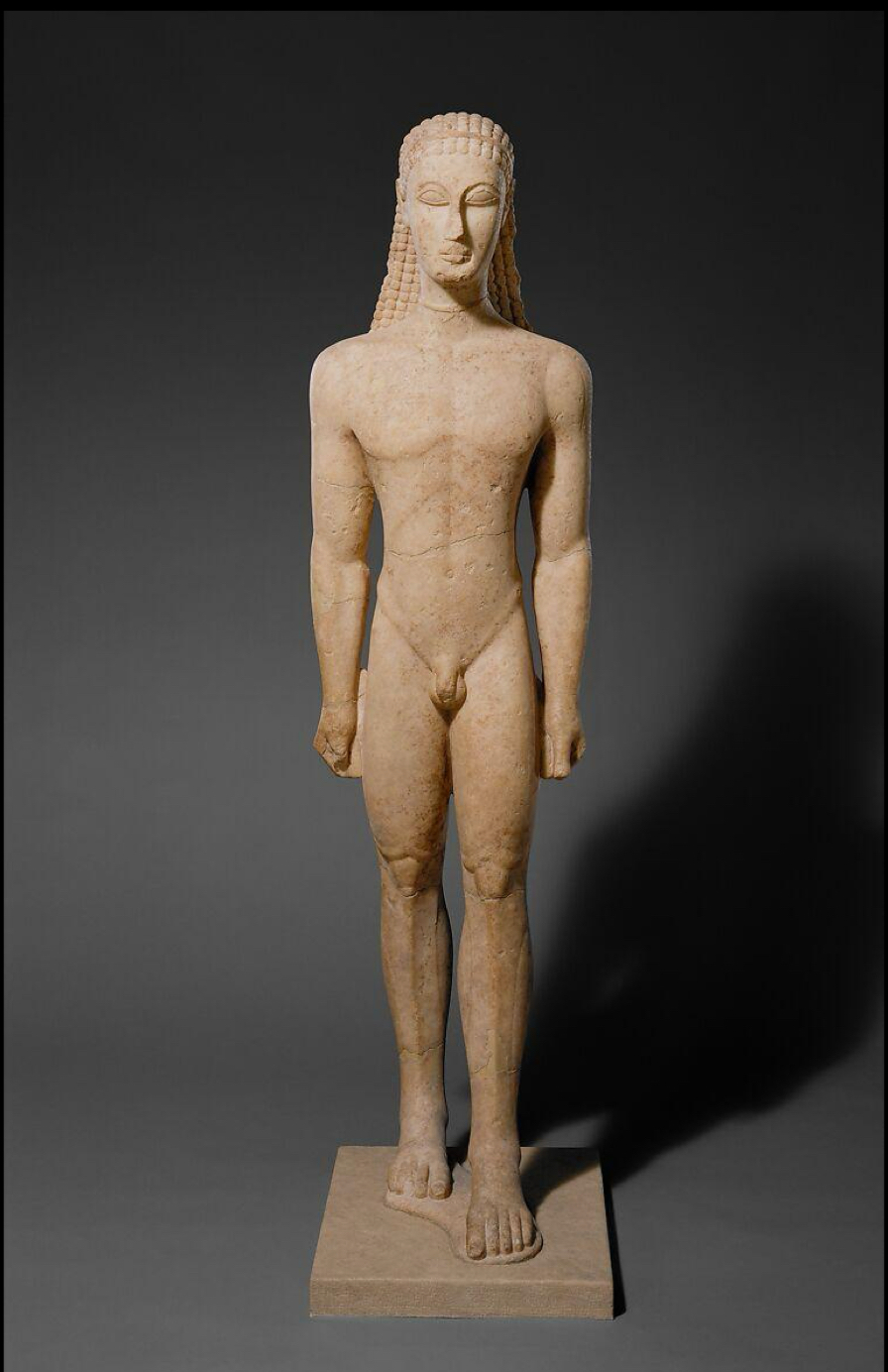
New York Kouros
What is it? A marble statue of a young, idealized male figure (Greek).
What does it look like? Nude, with a rigid, upright stance and archaic smile.
Materials: Marble.
How was it made? Carved from marble with early Greek techniques.
Who made it? Greek sculptors.
Where and when? Greece, circa 600 BCE.
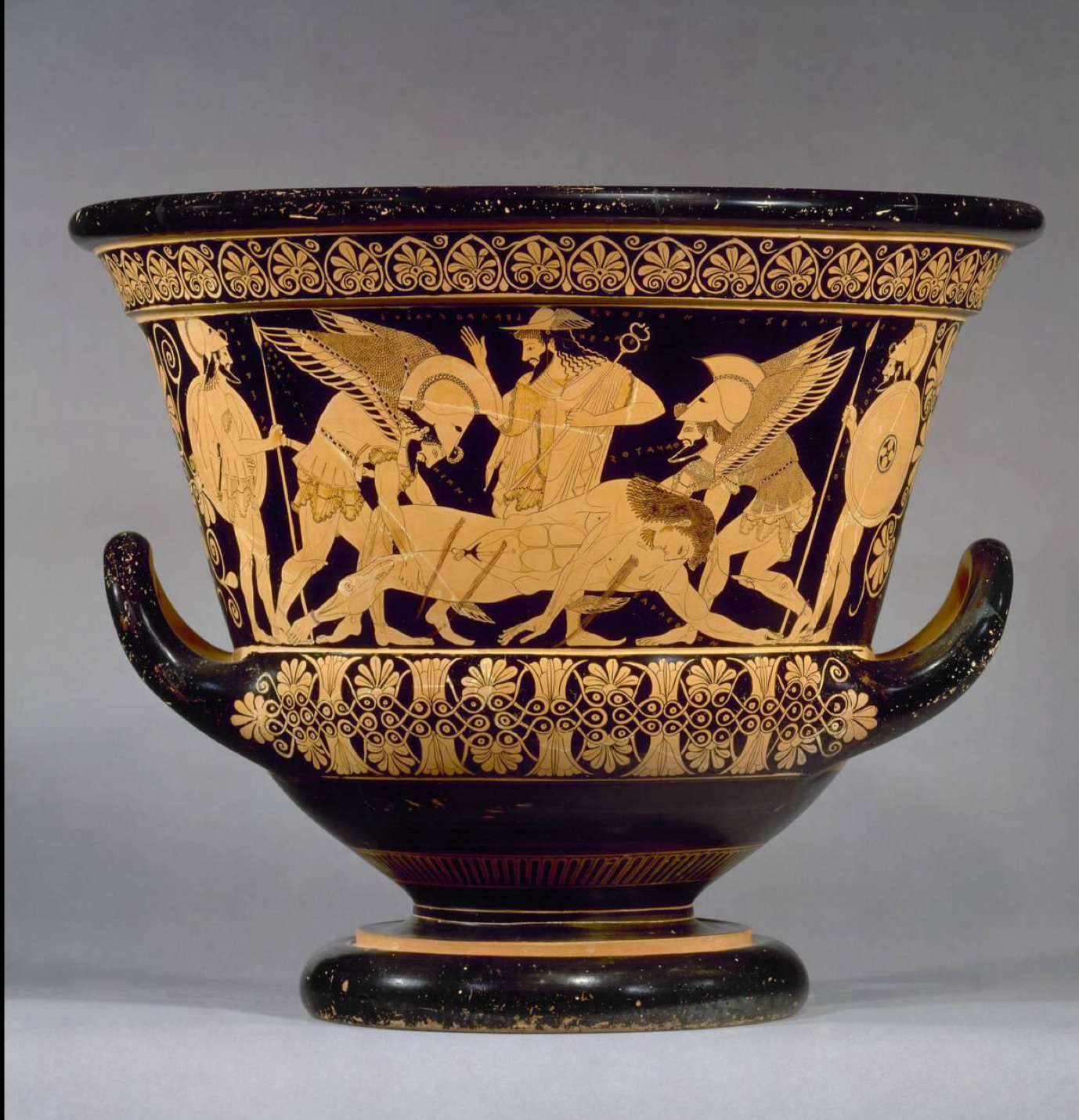
Euphronios, Death of Sarpedon
What is it? A painted vase depicting the death of the hero Sarpedon.
What does it look like? A dramatic scene of two gods (Sleep and Death) carrying Sarpedon’s body, surrounded by warriors.
Materials: Terracotta.
How was it made? Painted in the red-figure technique.
Who made it? Euphronios, a Greek artist.
Where and when? Athens, Greece, circa 515 BCE.
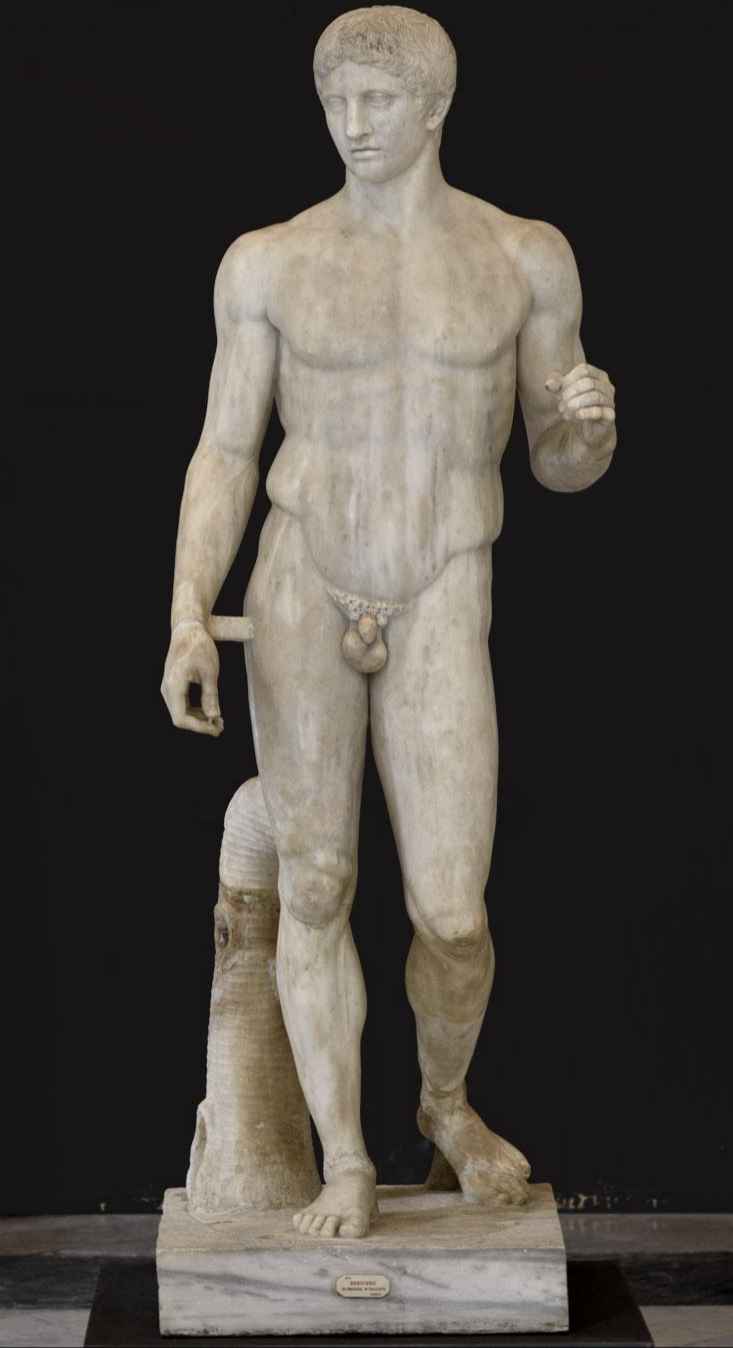
Polykleitos, Doryphoros (Spear Bearer)
What is it? A marble statue of a young man in an idealized pose.
What does it look like? A standing figure with a relaxed pose (contrapposto) and perfect proportions.
Materials: Originally bronze, later marble copies.
How was it made? Carved using mathematical principles for perfect human proportions.
Who made it? Polykleitos, an ancient Greek sculptor.
Where and when? Greece, circa 450 BCE
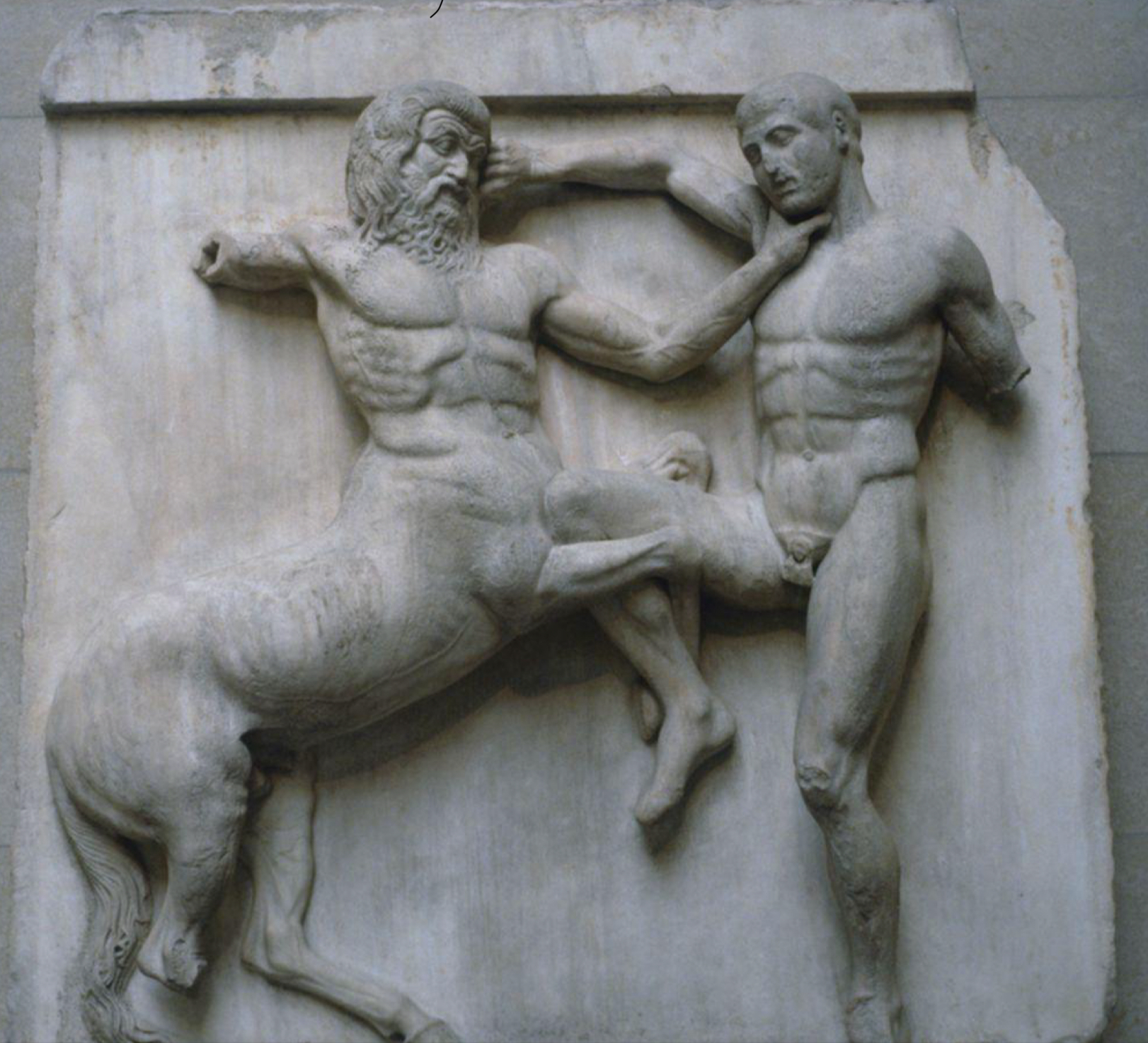
Phidias, Lapiths and Centaurs (Parthenon Frieze)
What is it? A series of marble reliefs depicting a battle between humans and centaurs.
What does it look like? Action-packed scenes of humans (Lapiths) fighting centaurs at a wedding feast.
Materials: Marble.
How was it made? Carved into the Parthenon’s frieze.
Who made it? Phidias and his workshop.
Where and when? Athens, Greece, circa 440 BCE.
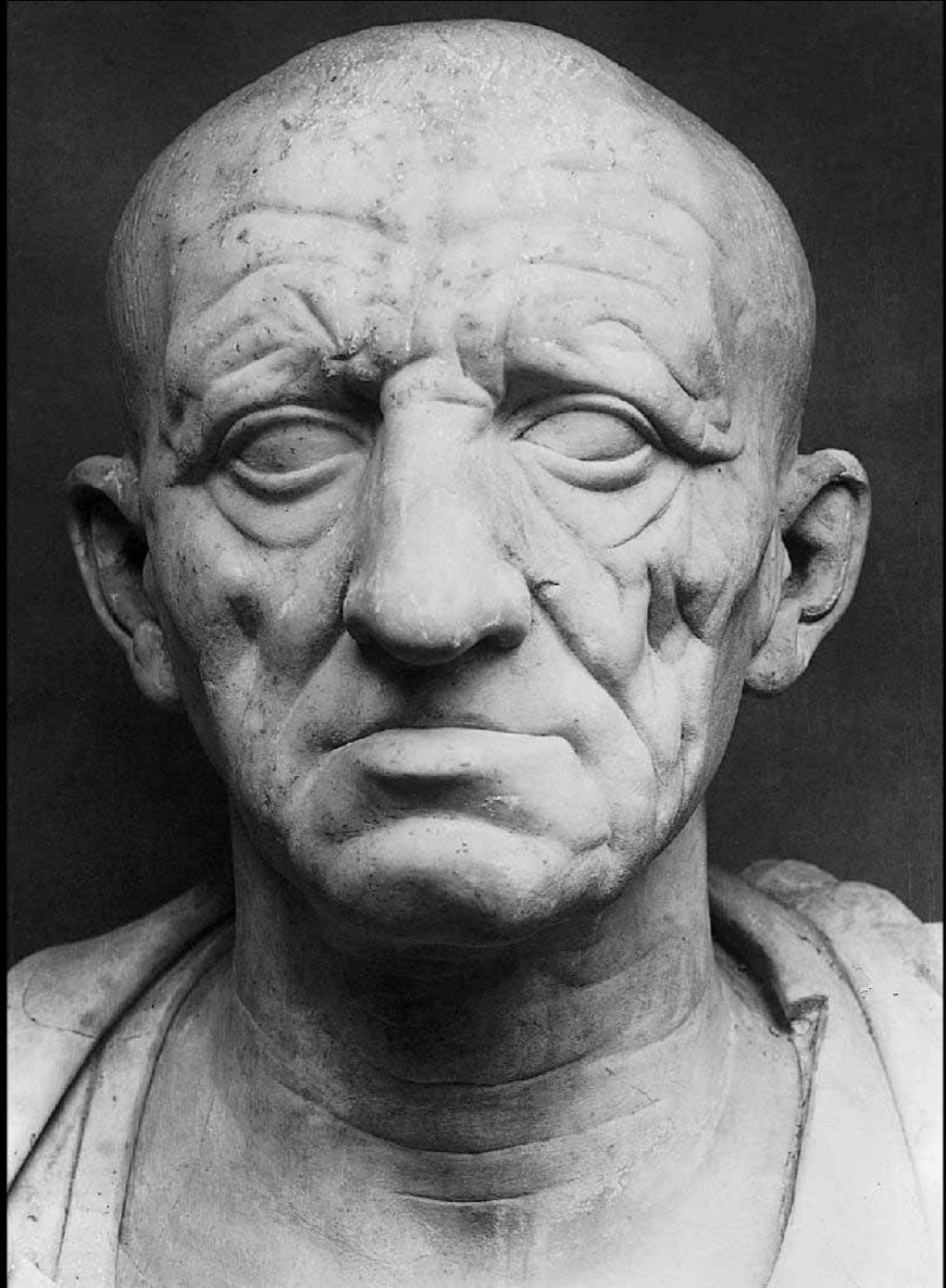
Head of a Roman Patrician
What is it? A realistic marble portrait of an elderly Roman aristocrat.
What does it look like? A wrinkled, highly detailed face, emphasizing age and wisdom.
Materials: Marble.
How was it made? Carved in a veristic (hyper-realistic) style.
Who made it? Roman sculptors.
Where and when? Rome, Italy, circa 50 BCE.
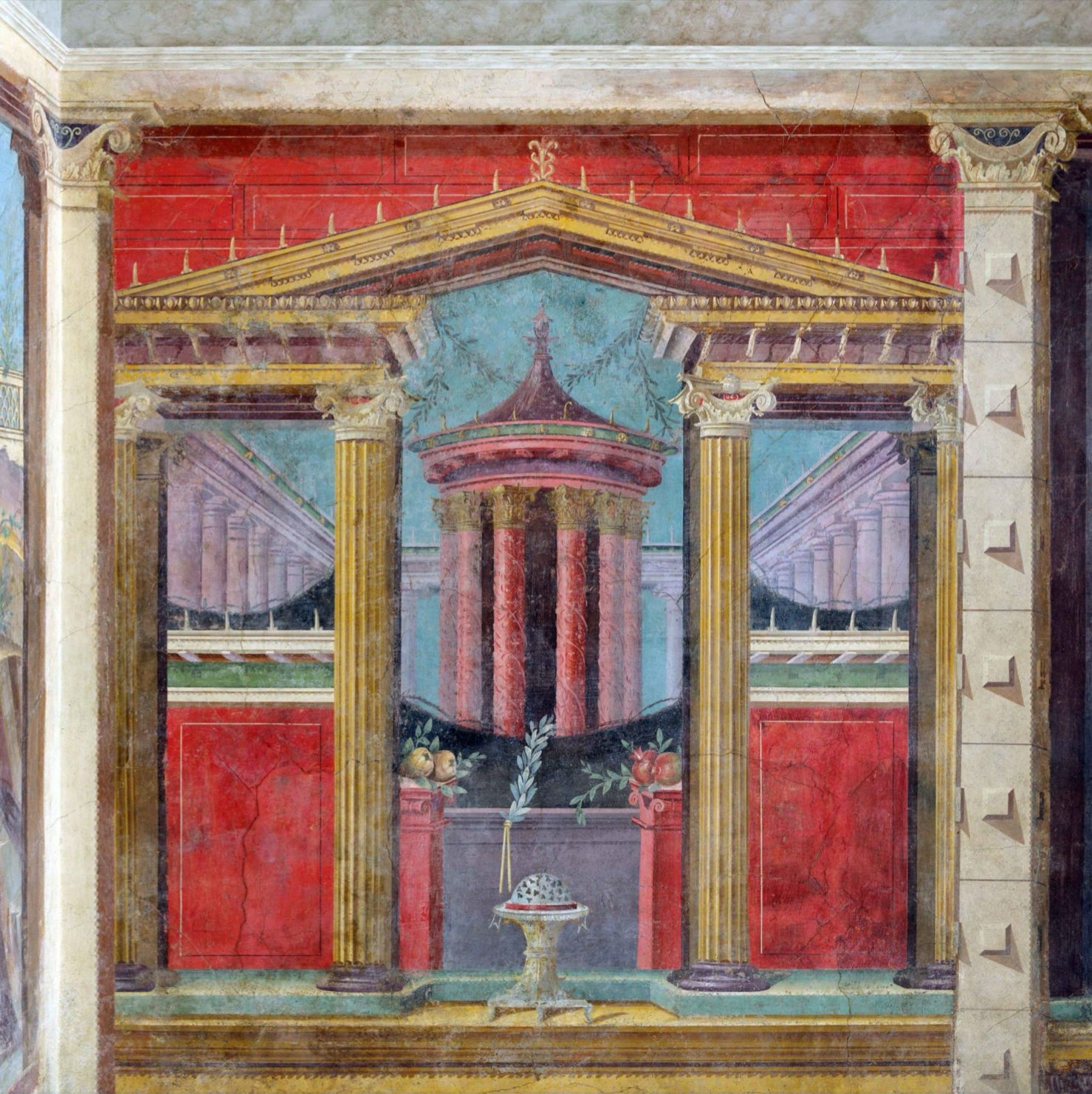
Painting of Architectural Vistas from Boscoreale, Italy
What is it? A fresco depicting architectural and landscape scenes in a villa.
What does it look like? Life-like frescoes that make the walls appear to open up to real architecture or vistas.
Materials: Fresco (paint on wet plaster).
How was it made? Painted directly onto the villa walls.
Who made it? Roman artists.
Where and when? Boscoreale, near Pompeii, Italy; 1st century BCE.
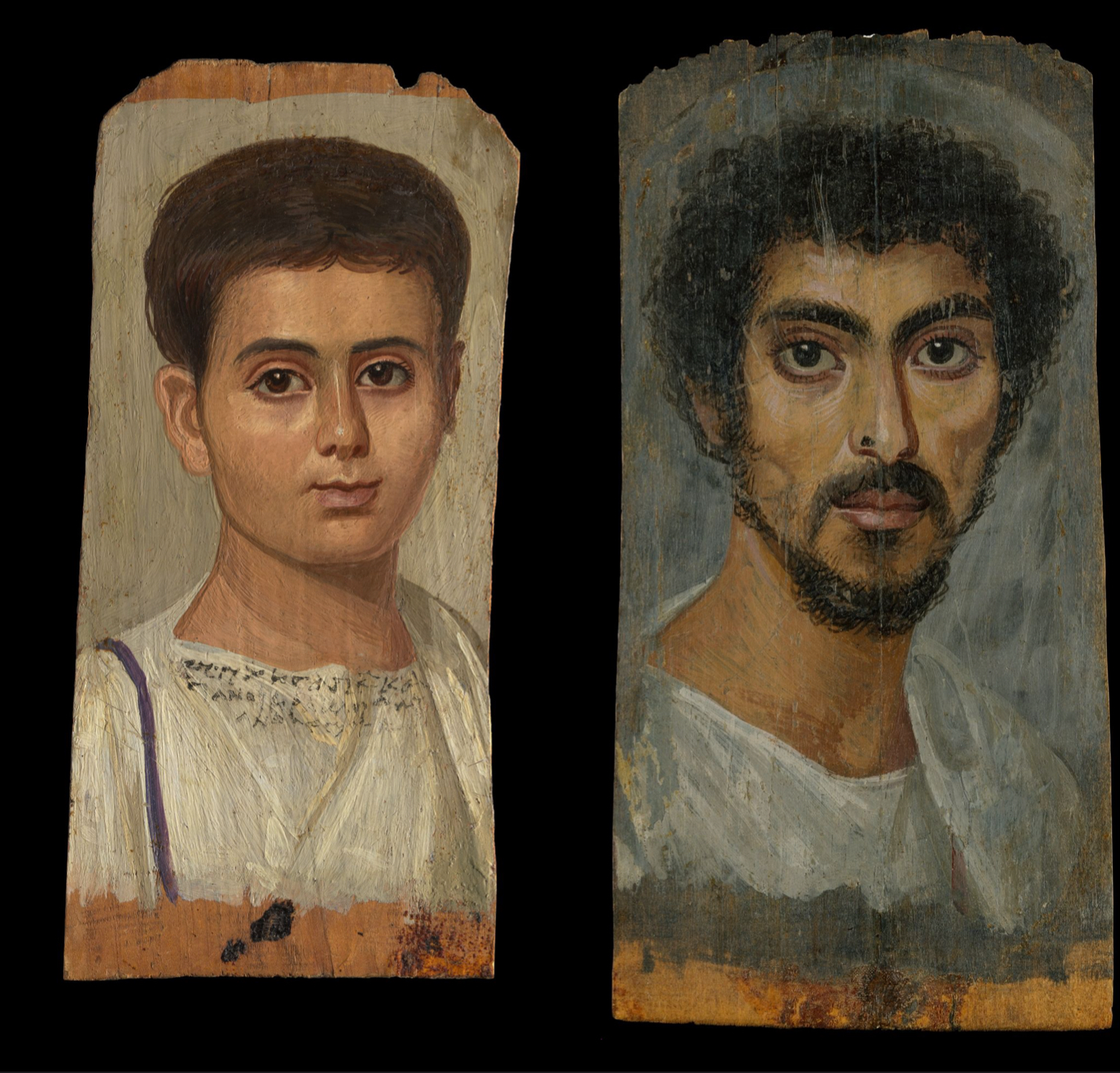
Fayum Mummy Portraits (2nd Century)
What is it? Realistic portraits of people, placed on mummies.
What does it look like? Detailed and lifelike portraits of individuals, often with warm, natural colors.
Materials: Wood panels, encaustic (wax-based) paint.
How was it made? Painted in encaustic (hot wax mixed with pigments).
Who made it? Egyptian artists.
Where and when? Fayum, Egypt; 2nd century BCE.
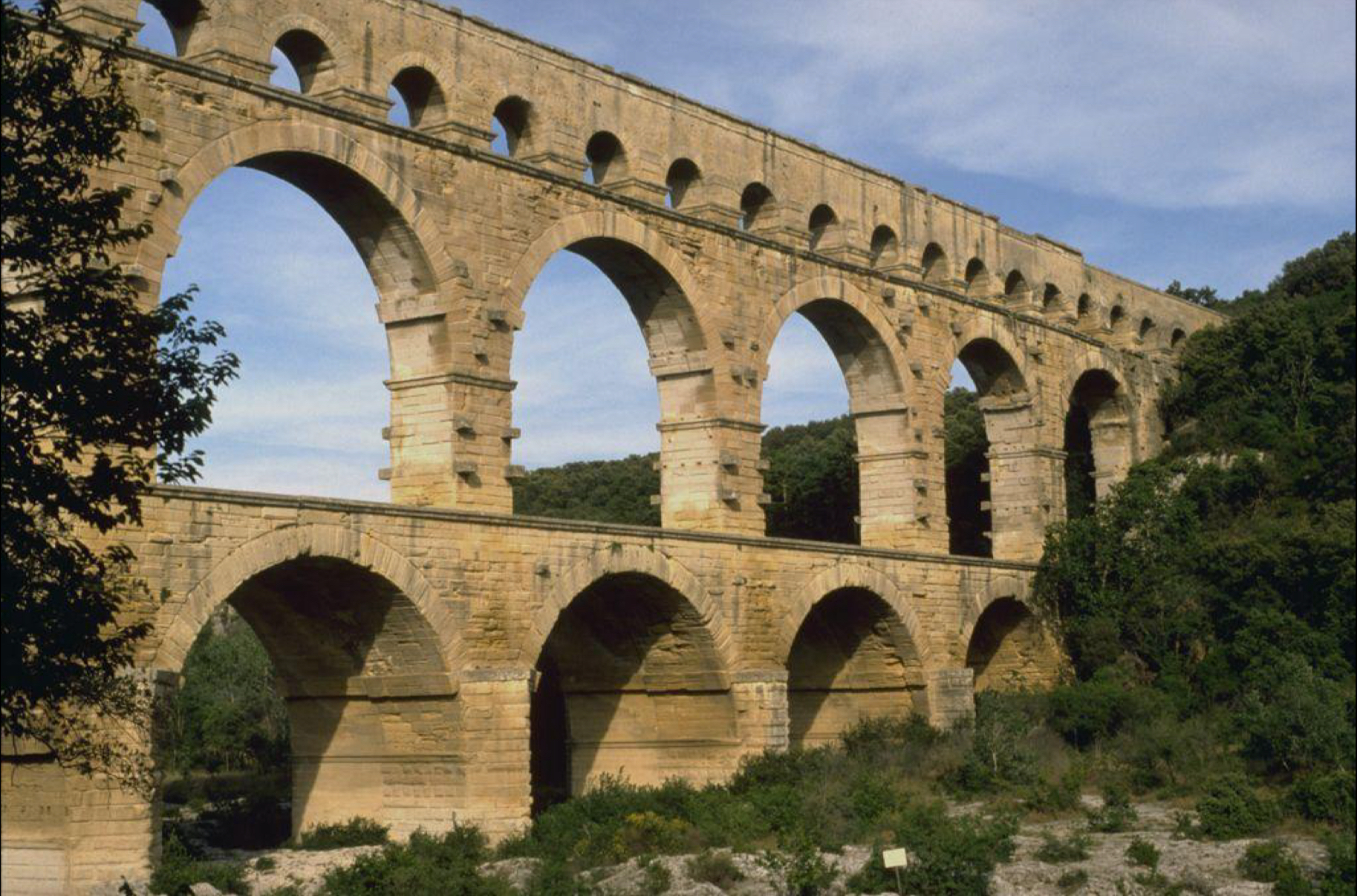
Pont du Gard
What is it? A Roman aqueduct bridge.
What does it look like? A massive bridge with three tiers of arches made from large stones.
Materials: Limestone.
How was it made? Built without mortar, using stone’s weight for stability.
Who made it? Roman engineers.
Where and when? Nîmes, France, circa 1st century BCE.
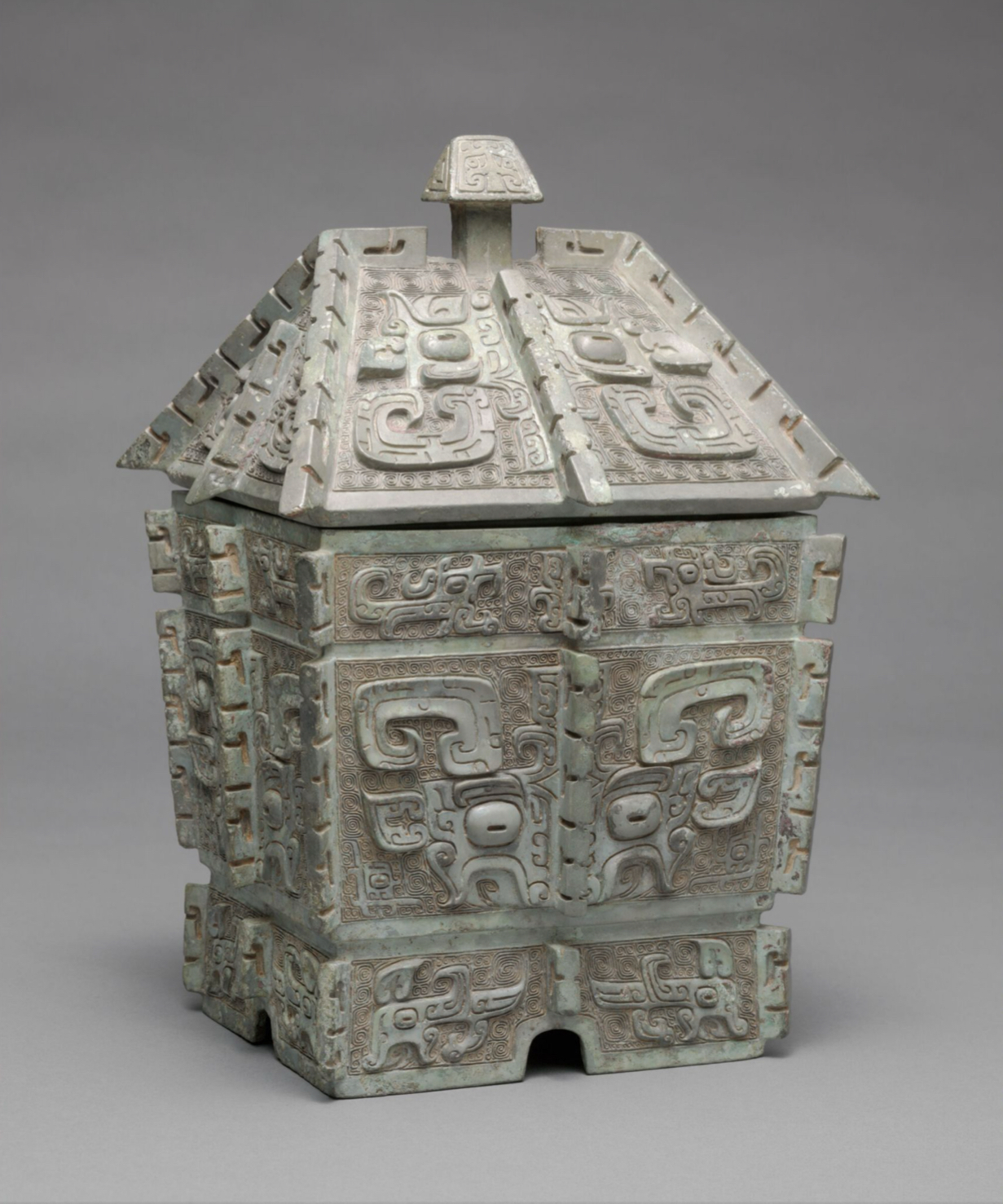
Ritual Vine Vessel
What is it? A ceremonial vessel for holding liquids, often for wine.
What does it look like? Ornate with vine and leaf motifs.
Materials: Bronze or gold.
How was it made? Cast or hammered into shape.
Who made it? Etruscan or Greek artisans.
Where and when? Italy or Greece, 5th century BCE.
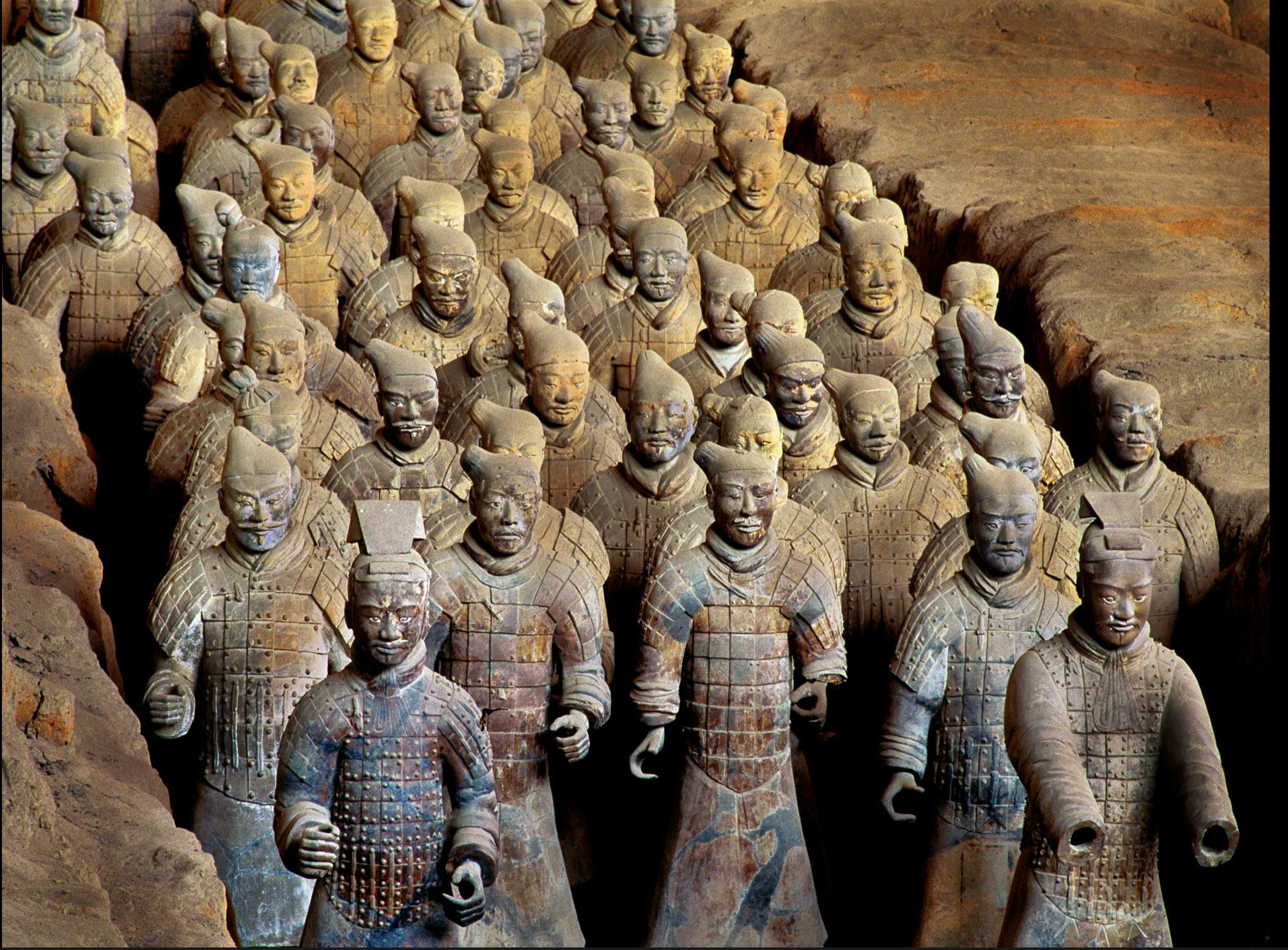
Terracotta Army (Qin Shi Huang Tomb Complex)
What is it? A collection of life-sized statues of soldiers and horses.
What does it look like? Thousands of detailed, individualized figures arranged in battle formation.
Materials: Terracotta.
How was it made? Molded and hand-painted, each soldier is unique.
Who made it? Chinese artisans.
Where and when? Xi'an, China, 3rd century BCE.
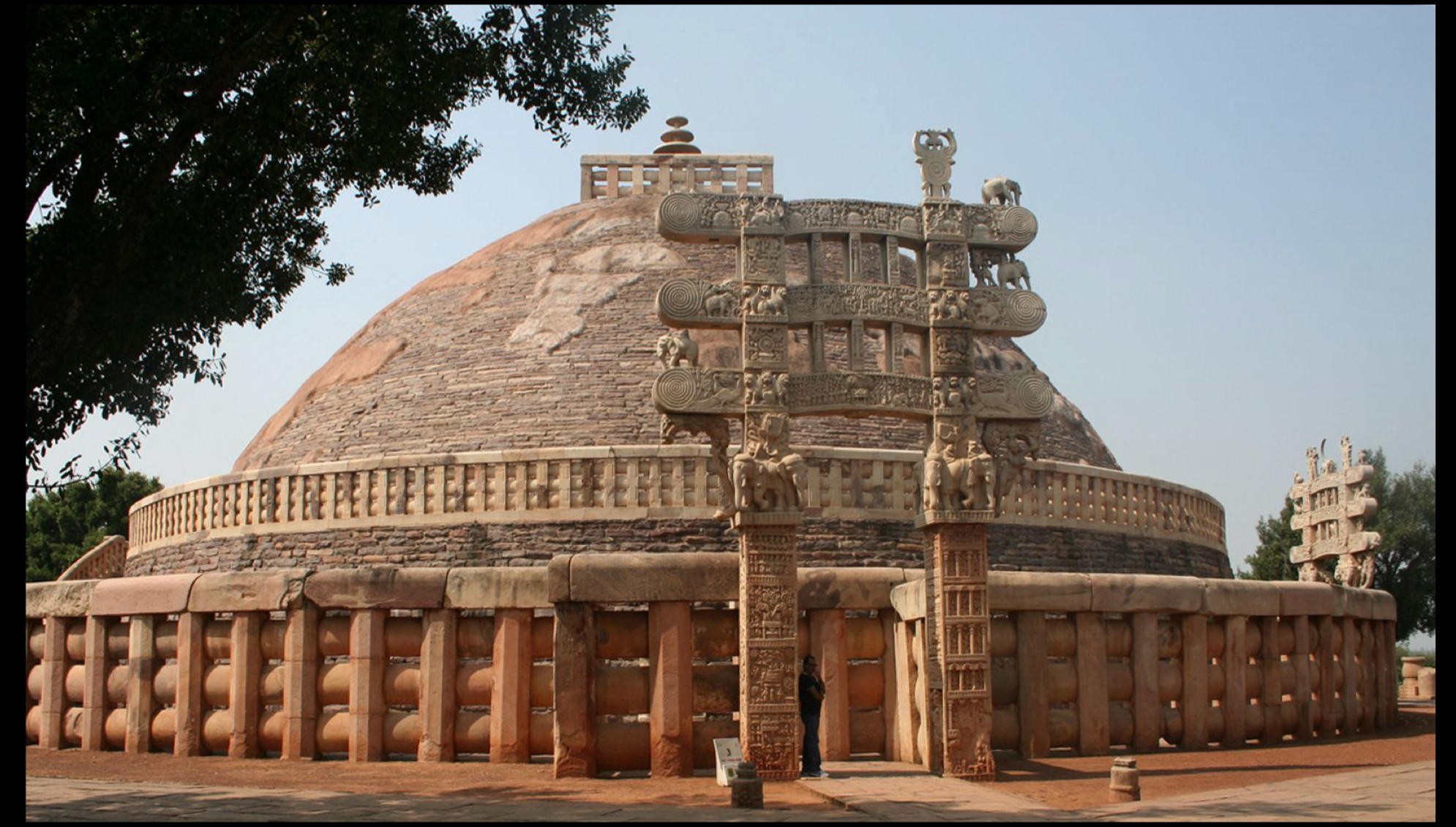
Great Stupa (Sanchi)
What is it? A Buddhist stupa (mound-like structure).
What does it look like? A large dome with railings and carvings.
Materials: Stone and brick.
How was it made? Built with Buddhist symbols and structure.
Who made it? Indian artisans.
Where and when? Sanchi, India, 3rd century BCE.
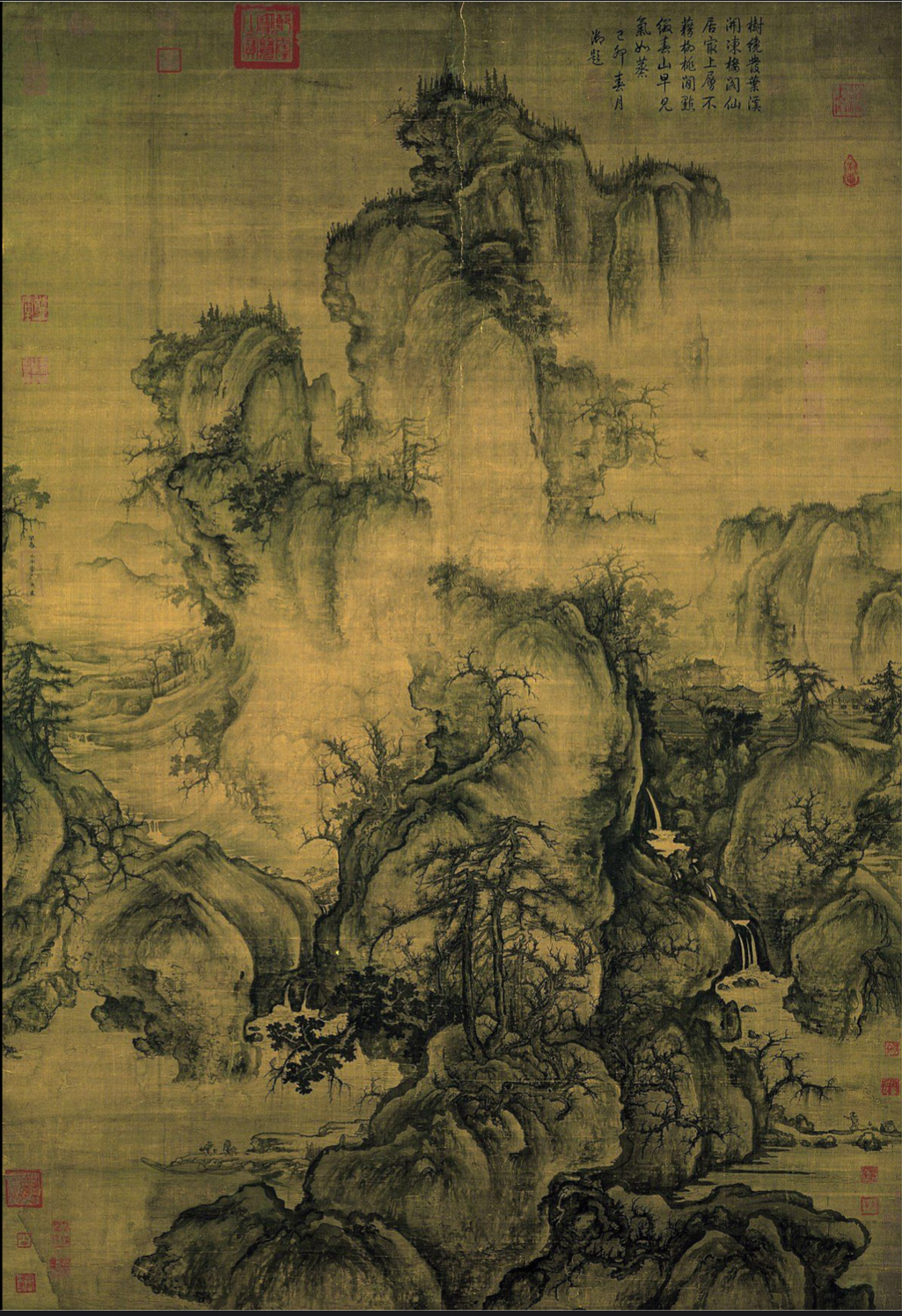
Guo Xi, Early Spring
What is it? A Chinese landscape painting.
What does it look like? A serene and misty landscape with mountains and trees.
Materials: Ink and color on silk.
How was it made? Painted with brush techniques to create depth and harmony.
Who made it? Guo Xi, a famous Chinese artist.
Where and when? China, 11th century BCE.
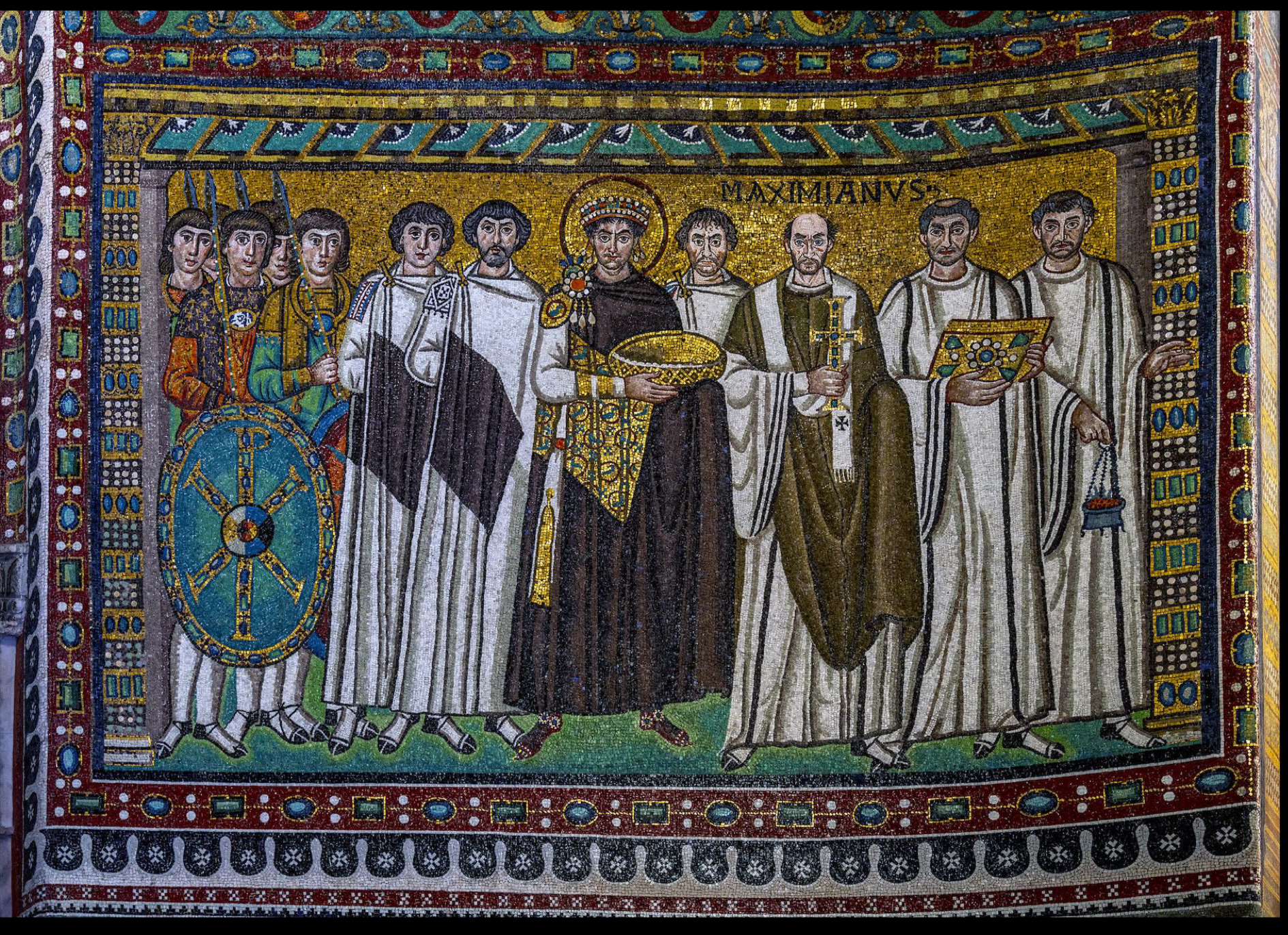
Court of Justinian Mosaic
What is it? A mosaic showing Emperor Justinian with his court.
What does it look like? The emperor in the center, surrounded by soldiers and priests.
Materials: Glass and stone tesserae.
How was it made? Carefully assembled with tiny pieces of glass and stone.
Who made it? Byzantine artists.
Where and when? Ravenna, Italy, circa 547 BCE.
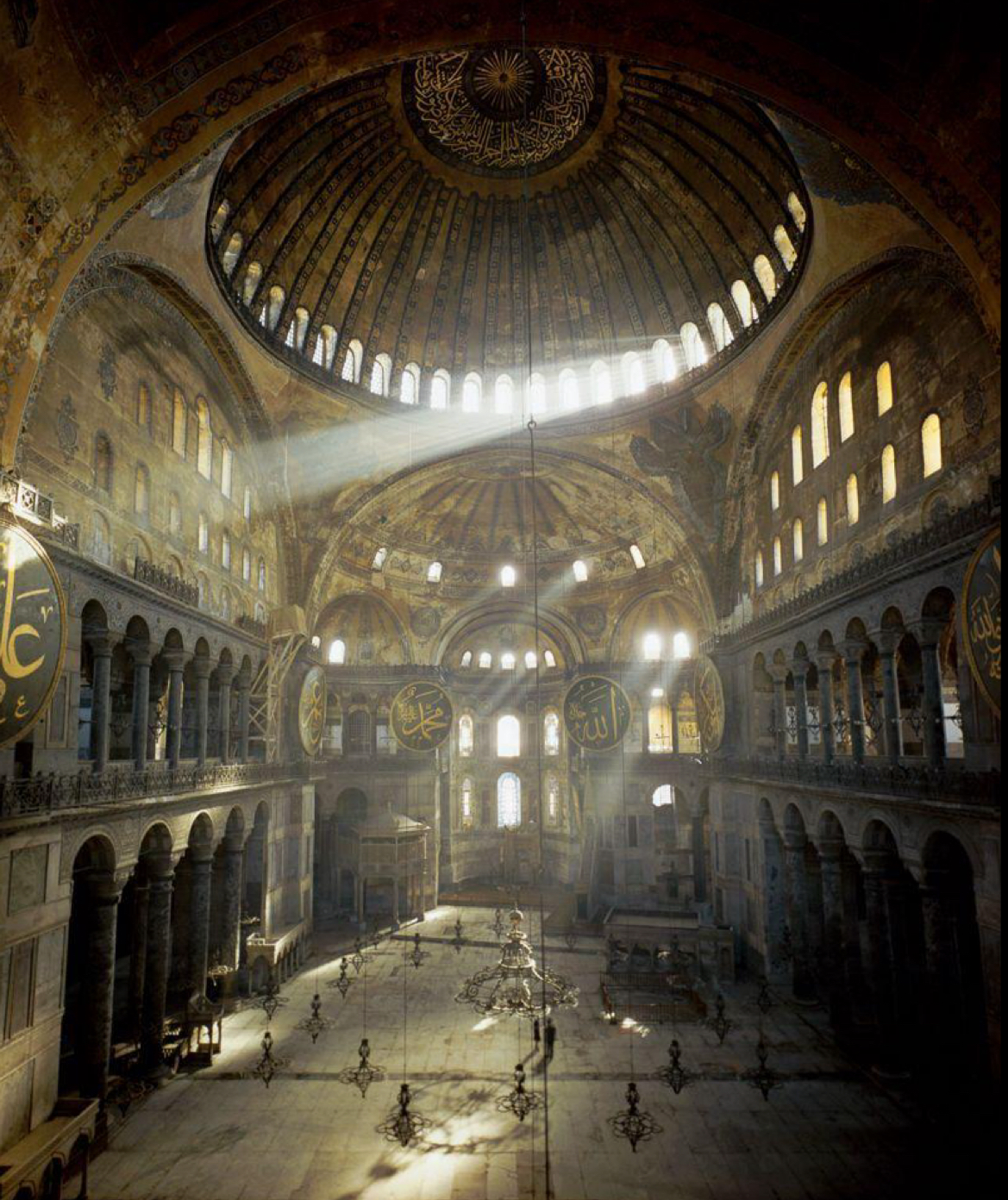
Anthemius and Isidore, Hagia Sophia
What is it? A large Byzantine church.
What does it look like? A massive dome with elegant mosaics and windows.
Materials: Stone, marble, and glass.
How was it made? Designed with advanced engineering and architectural techniques.
Who made it? Anthemius and Isidore.
Where and when? Constantinople, Turkey, completed in 537 BCE.
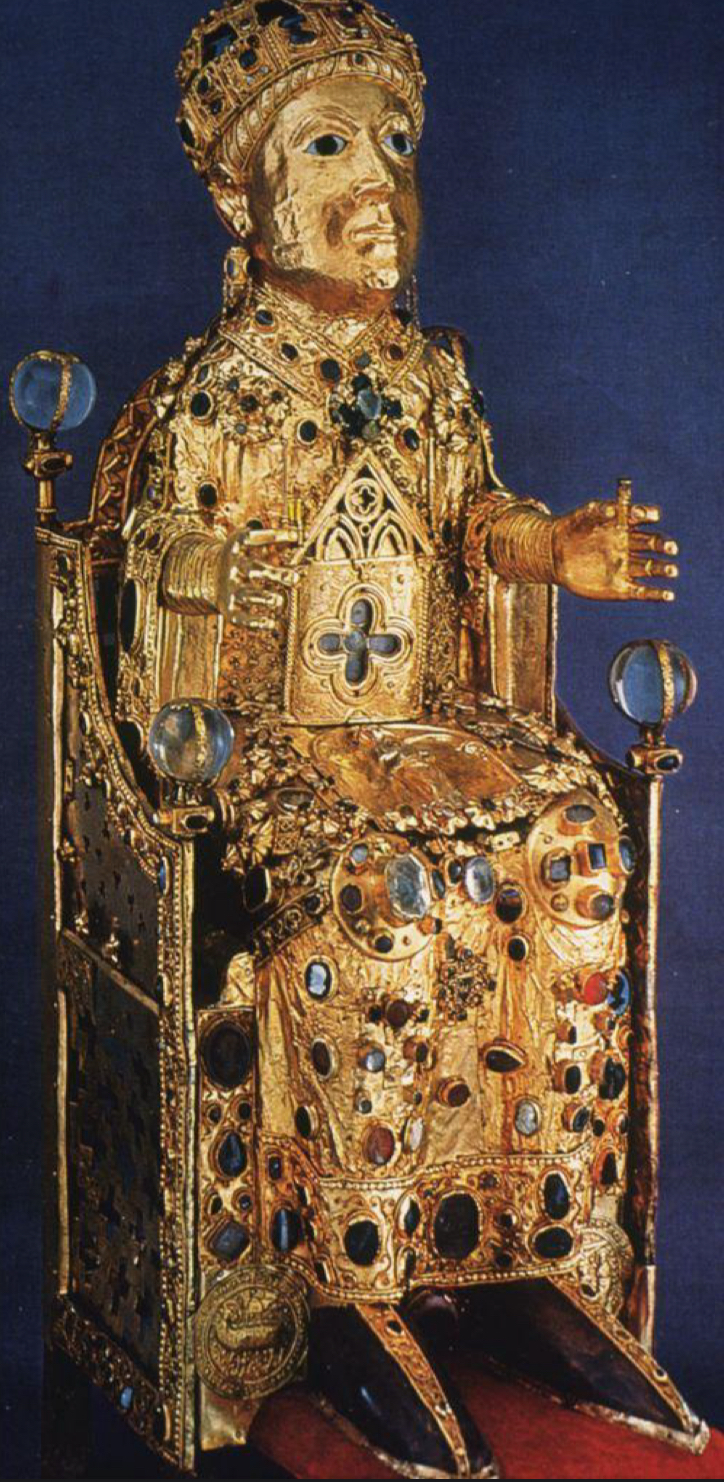
Reliquary of Sainte-Foy
What is it? A golden container holding the relics of Saint Foy.
What does it look like? A gold-plated figure of Saint Foy, adorned with jewels.
Materials: Gold and jewels.
How was it made? Crafted by medieval artisans.
Who made it? Unknown medieval craftsmen.
Where and when? Conques, France, 9th century BCE.
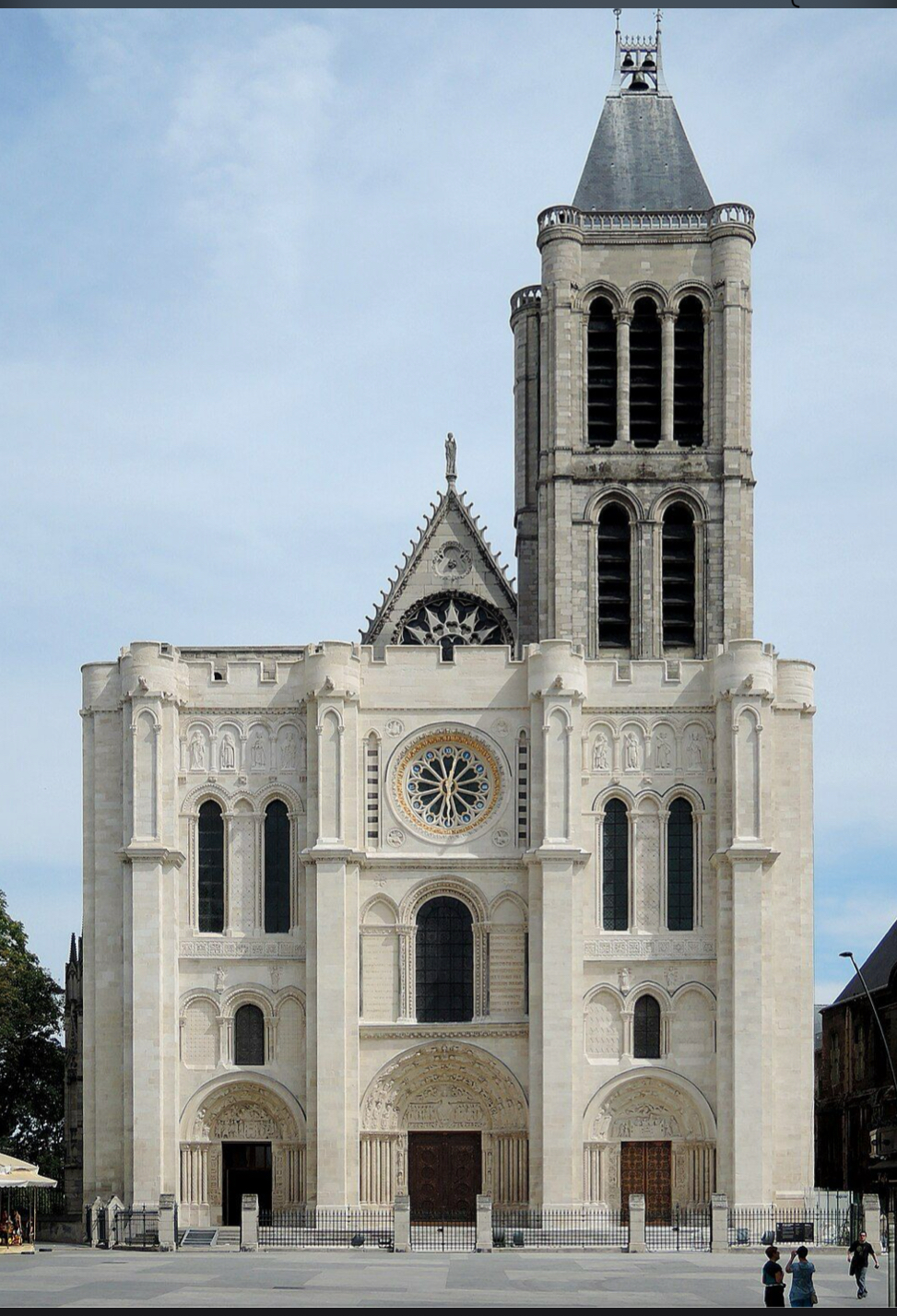
Abbey Church of Saint Denis
What is it? The first Gothic cathedral.
What does it look like? Pointed arches, ribbed vaults, and stained-glass windows.
Materials: Stone and glass.
How was it made? Designed with Gothic architectural innovations.
Who made it? Architect Abbot Suger.
Where and when? Saint-Denis, France, completed in 1144 BCE.
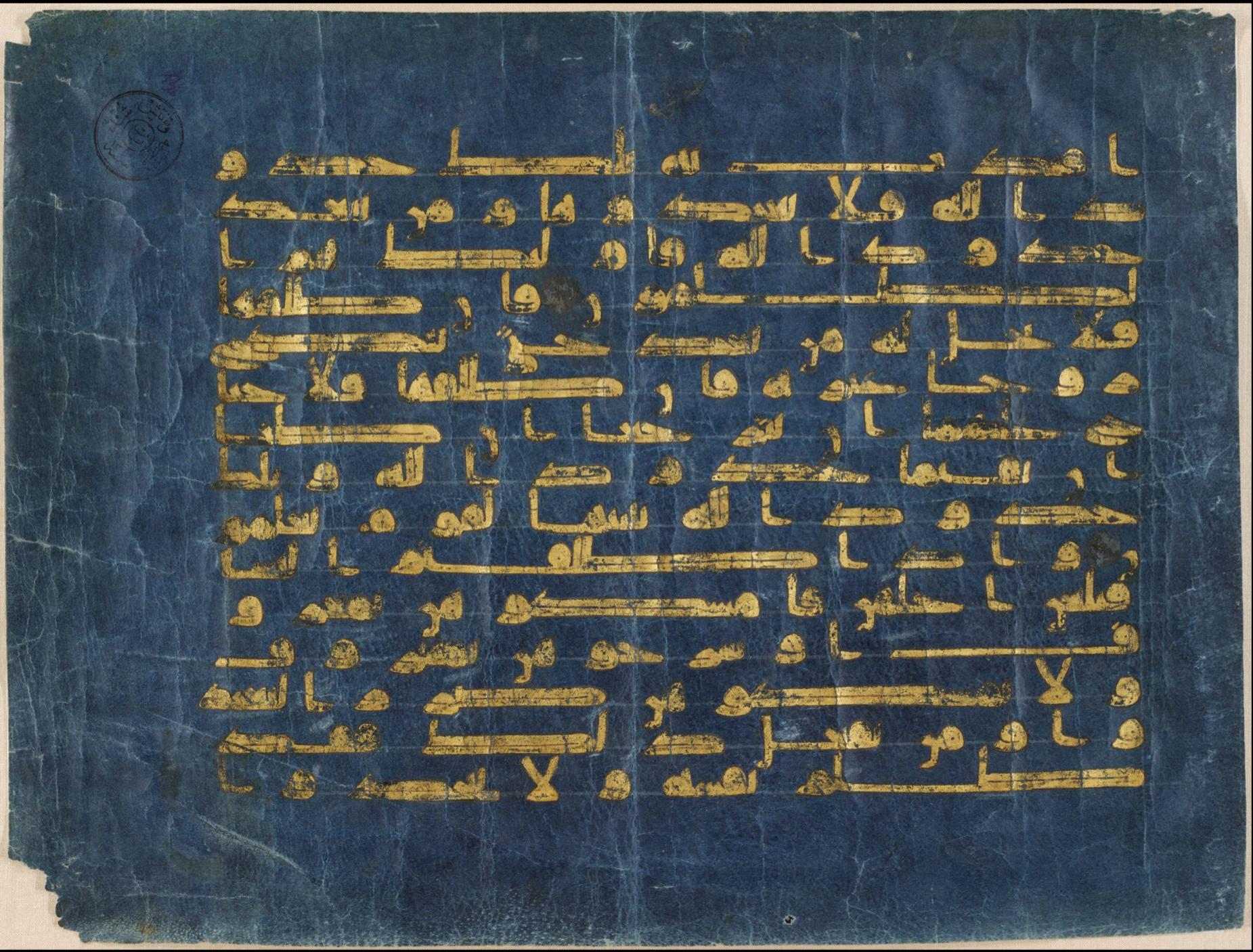
Quran Manuscript
What is it? A page from a Quran manuscript.
What does it look like? Arabic script with geometric patterns or decorative elements.
Materials: Ink on parchment or vellum.
How was it made? Written by hand by skilled calligraphers.
Who made it? Islamic scribes.
Where and when? Middle East, circa 9th century BCE.